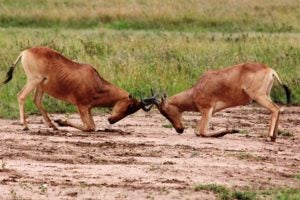
Learning Objectives
Students will understand the purpose of animal adaptation.
Grade Levels
3-5
Next Generation Science Standard Strand
3.Interdependent Relationships in Ecosystems
Materials Needed
Picture of a Chihuahua
Picture of a wolf
Lesson
Introduction
- Tell students that today you will be introducing the concept of adaptation. Define adaptation as the change that happens when a species becomes more able and likely to survive.
- Inform students that they’ll be working together to look closely at a dog that adapted in order to survive.
Explicit Instruction and Guided Practice
- Show your class an enlarged version of the observation handout. You can use a document camera to project this or draw an example of the board.
- Explain that you will be modeling how to make observations and draw conclusions from them.
- Tell your class that the first part of the routine asks them to describe the things they can see.
- Show them a picture of a Chihuahua.
- Place your students in small groups.
- Ask your students to make observations of the Chihuahua and record them on the chart paper.
Guided Practice/Interactive Modeling
- Tell your students that now they will have the opportunity to think about the observations they’ve made. They should write their thoughts about the observations on their chart.
- Instruct everyone to look at the image and their observations. When we make observations and think about them, we draw conclusions based on them. This means we make decisions about the information.
- Have your students turn and talk to their partners about what they think about the images that they’ve just observed. For example: I think that the Chihuahua’s legs are very short so they might not be able to jump high. I think that the Chihuahua is very small so they can probably hide well if they need to.
- Model how to fill in the chart with one observation, thinking and decision (conclusion). Example: I notice that the Chihuahua is very small. I think this might be helpful because they can hide easily. I have decided that Chihuahuas are small, which puts them in danger, but they can hide to protect themselves.
- Show students a picture of a wolf compared to the Chihuahua. Explain that at one time, all of what we now consider dogs, were wild wolves. Over time, some became domesticated and learned to live with humans. They changed form and adapted (changed) to their needs. A Chihuahua is small and might be an easy prey for larger animals. For that reason, Chihuahuas adapted to have very large, cone shaped ears. This allows them to hear better than most dogs (who already hear very well!) and know that a predator is coming so they can escape.
- You can research more about Chihuahuas here: About Chihuahuas
Independent Working Time
- On your observations sheet, make observations about the wolf and the Chihuahua. Come up with one way that they have adapted and how it might help them.
Review and Closing
- Gather your students together as a whole group. Ask them to share their ideas.
References
Chihuahua. (n.d.) Retrieved from http://akc.org/dog-breeds/chihuahua/.

